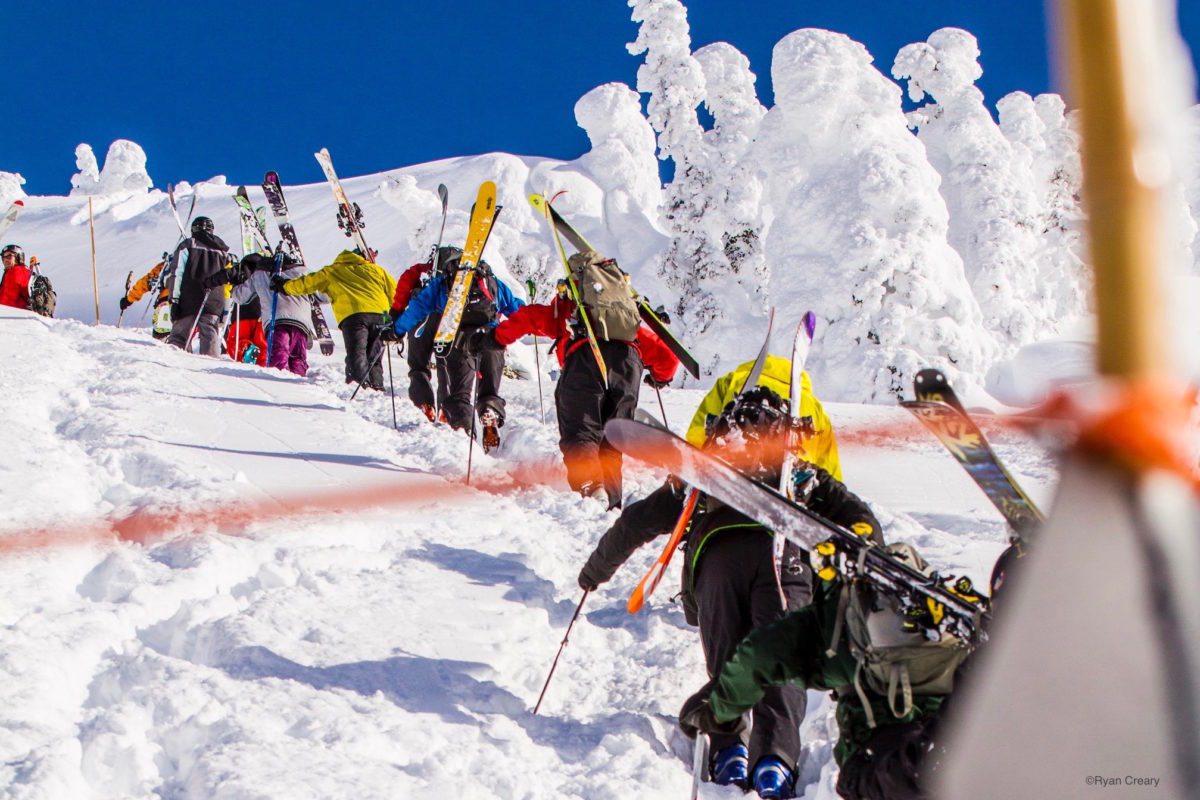 The backcountry skiing fatality rate has declined in recent years. Image: Mountain Culture Magazine
The backcountry skiing fatality rate has declined in recent years. Image: Mountain Culture MagazineYou would think that with more people skiing the backcountry, more people would be dying out there, right? Avalanches are inherently dangerous, easy to trigger and claim lives every year. However, recent studies show that this is simply just not the case. The backcountry is claiming fewer fatalities every year – great news for backcountry skiers and the ski industry as a whole.
 Not being familiar with terrain or conditions in the backcountry is the most common way to trigger an avalanche. Image: ABC News
Not being familiar with terrain or conditions in the backcountry is the most common way to trigger an avalanche. Image: ABC NewsIf backcountry-related fatalities were to increase proportionally to the growing number of skiers that are skiing it, we’d have seen over 200 deaths last year. Fortunately, and to our surprise, only 27people were killed in the backcountry last year – not 200. 27 deaths is still too high a number in my opinion, but you got to hand it to us – us skiers are doing something right out there in the mountains as we are losing less of our friends and family to avalanches every year. We’re becoming smarter and safer in the backcountry. But how or why, exactly?
To understand how we are conscientiously preventing more deaths in the backcountry, we must first understand why more people are choosing to ski the backcountry in the first place.
Backcountry skiing is wildly fun. Skiing out of bounds is much more of a thrill than skiing inside of a resort when you factor in the increased chance of death due to prevalent avalanche danger. It’s adrenaline inspiring and addicting.
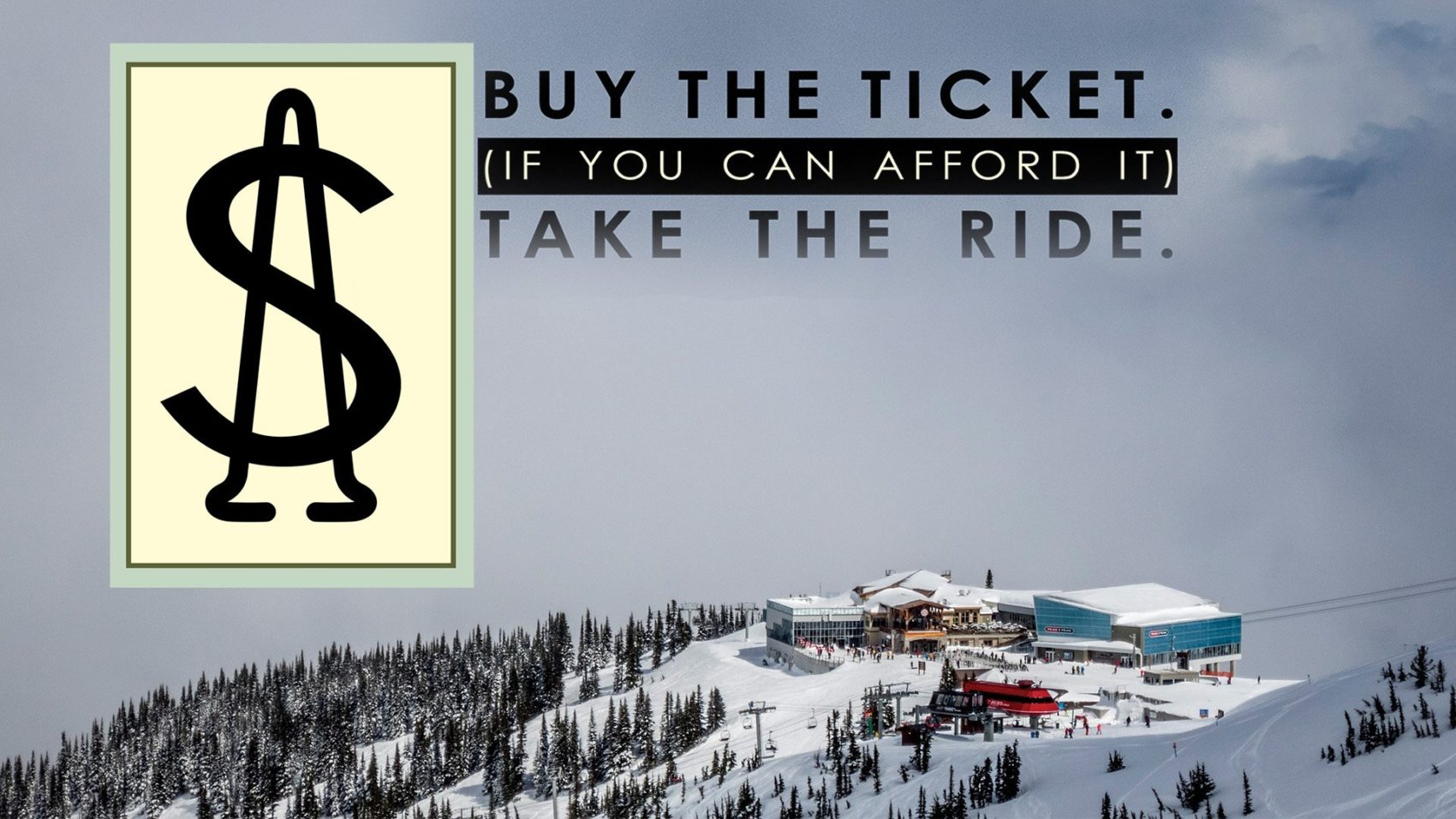 Lift ticket prices are going up every year. Image: Snowboarder Magazine
Lift ticket prices are going up every year. Image: Snowboarder Magazine
Ski resort prices are inflating. With lift prices exceeding $200 at Vail Ski Resort, and prices being up to $180 at popular resorts such as Deer Valley and Breckenridge, it can be argued that skiing is transitioning into more of a high-class, luxury sport.
Most skiers and not part of the upper-class of society, even though we’d all like to be. Sure, there are still ski areas that try their best to offer affordable lift passes, but to compete with big ski conglomerates like Vail Mountain Resort and Alterra Mountain Company they have to increase their lift ticket prices as well. And these prices are only continuing to rise. It’s textbook inflation in the ski industry.
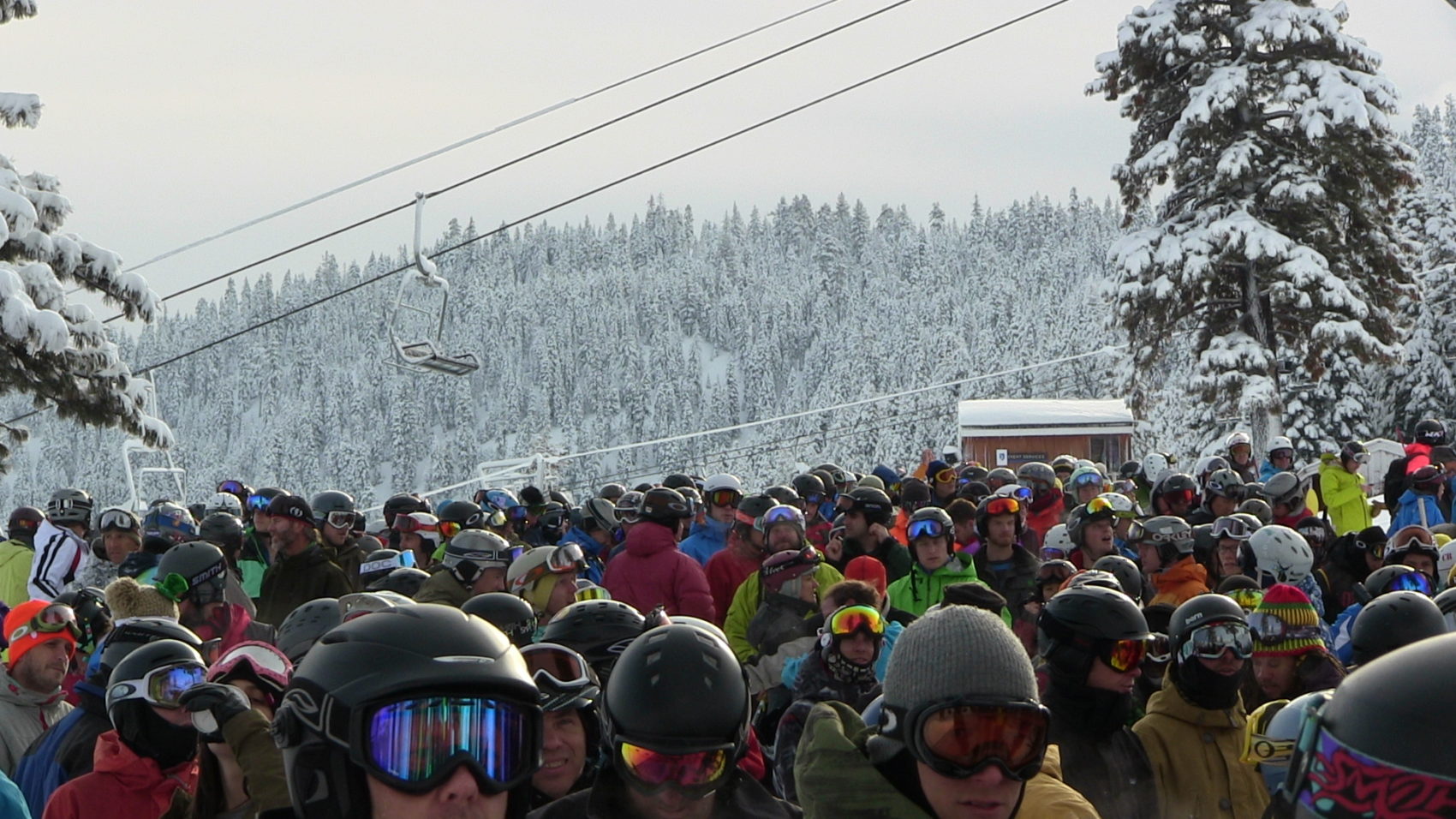
A lift line from hell.
Ski areas are becoming more crowded. This is because more people are skiing than ever before. In 2016, nearly 12 million people skied at ski areas in the United States alone! However, in the sanctuary of the backcountry, you will not see near as many crowds and there certainly won’t be any lift lines. So, it’s not too hard to imagine why more people are transitioning into skiing the backcountry from resort skiing.
So how exactly are we decreasing the number of backcountry fatalities each year even though the number of people skiing the backcountry is continually increasing? I believe that the availability of avalanche forecasting resources plays a major role in this. Today, the outreach of programs that are available to the general public and information about snow conditions and avalanche forecasting is the best it has ever been.
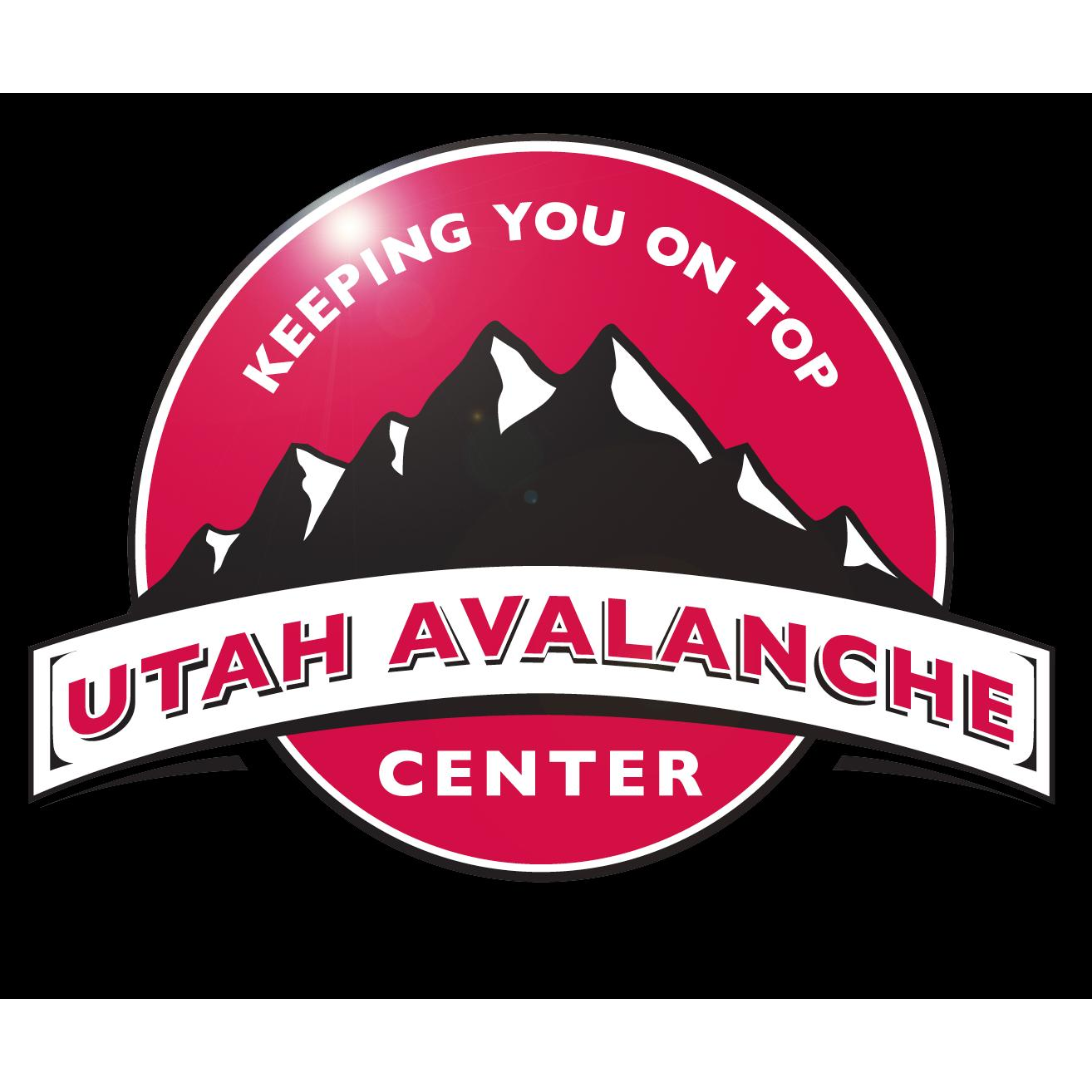 Image: VEBOWithin a few seconds, you can log into an app or website, read a report from an expert avalanche safety officer who was out that morning, and finds out just how the mountains are looking that day. The amount of avalanche reporting services nowadays is uncanny and almost every mountain range in the continental united states has a forecasting service that reports snow conditions and avalanches every day during the winter. For instance, living near the Wasatch mountains- which host unlimited amounts of backcountry access and incredible ski terrain - I am checking The Utah Avalanche Center every day for snow reports and weather conditions during the winter.
Image: VEBOWithin a few seconds, you can log into an app or website, read a report from an expert avalanche safety officer who was out that morning, and finds out just how the mountains are looking that day. The amount of avalanche reporting services nowadays is uncanny and almost every mountain range in the continental united states has a forecasting service that reports snow conditions and avalanches every day during the winter. For instance, living near the Wasatch mountains- which host unlimited amounts of backcountry access and incredible ski terrain - I am checking The Utah Avalanche Center every day for snow reports and weather conditions during the winter.Here’s how it works: each day UAC forecasters arrive at the office to report about snow conditions in the Wasatch and surrounding mountain ranges at 4:00 am. First, they record an initial phone message summarizing avalanche conditions by 5:00 am. Then, a detailed advisory is distributed by phone message, radio PSAs, email, and website by 7:30 a.m. Updates are sent out throughout the day as conditions change. The Utah Avalanche control center is just one forecasting service among dozens that help to promote safety in the backcountry and actively reduce fatalities.
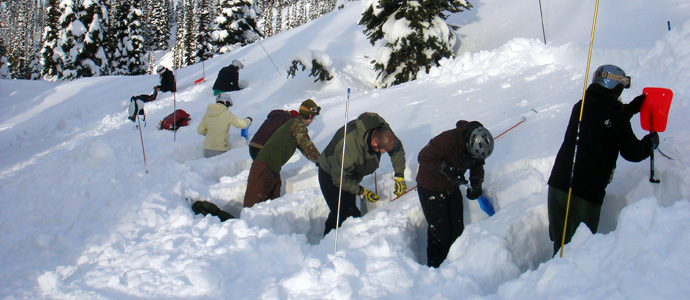 Digging a snow pit (as shown) is a method to test the potential for a slide and is taught in a beginner avalanche safety course. Image: Snow Safety & Consulting
Digging a snow pit (as shown) is a method to test the potential for a slide and is taught in a beginner avalanche safety course. Image: Snow Safety & ConsultingAnother driving factor that has been shown to promote safety in the backcountry and reduce deaths is the tremendous availability of avalanche safety programs and courses available to skiers everywhere. We are seeing more avalanche safety courses being provided in major cities and skiing hubs around the nation than ever before - and more skiers are taking them. These courses are also much more available than they used to be.
For example, at the University of Utah– a public university with 24,635 undergraduates located in the heart of Salt Lake City, a major skiing hub – you can take avalanche safety courses for college credit. These courses will attain credit that goes towards almost any degree, as most bachelor's degree programs require that you take at least one or two science-based classes as general education requirements. What better way to fulfill that credit than by gaining some insight on how to be a safer and smarter skier in the backcountry?
More often than not, free avalanche safety courses are offered to if you catch them at the right time and place. That’s right, I said free. This incentivizes people to take the course and increase their awareness about avalanches, especially younger aged skiers with lower incomes. Plus, who doesn’t love free stuff?
Social media: We live in a wild time to be alive. This is an era with social media platforms like Facebook, Instagram, and YouTube where you can instantly know what every one with an account is doing, feeling or talking about. With backcountry safety organizations promoting safe skiing habits or marketing courses through these platforms, their outreach is massive. This raises awareness, and it raises it in a way like never before.
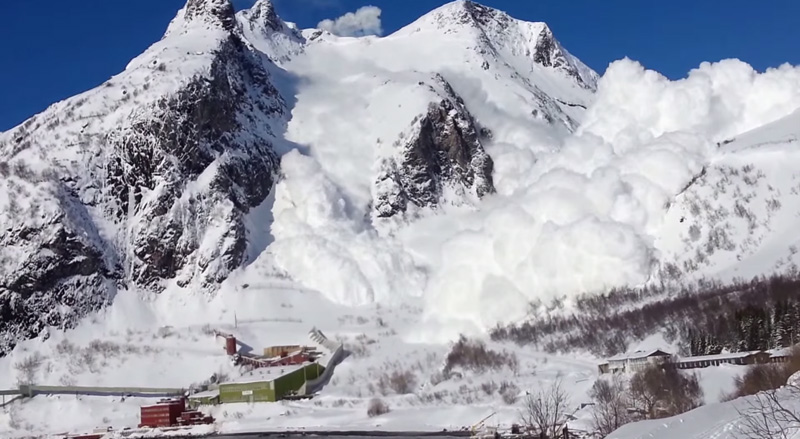 Avalanches are the number one killer of skiers in the backcountry. Image: GearJunkie
Avalanches are the number one killer of skiers in the backcountry. Image: GearJunkieIf an avalanche happened a decade or two ago, it would take some time for people outside of the immediate circle of whom it affected, to hear about it. News of such a thing would be spread first by word of mouth, and then maybe by T.V., radio, or newspaper. Sure, news of the avalanche would still get to a lot of people, but it wouldn’t get to them anywhere near as fast as if you posted an image or video about it on your social media platforms that could potentially be seen by thousands of followers almost instantaneously.
As the number of skiers skiing in the backcountry perpetually increases for a variety of reasons (my favorite being that backcountry skiing is just plain awesome), so does the awareness of its dangers. It has to. Otherwise, more people would die, and that is not what we as skiers want. We want to go out there, find a good line, enjoy the mountains, challenge ourselves, and have a good time. And if more people are going to be doing this, more people are going to have to be safe; because the more people skiing in the backcountry increases the risk of slides and fatalities.
But, for now, we can give ourselves a little credit and take this one as a win. Because by keeping the number of our beloved from dying relatively low, and actively working to lower that number, we’re obviously doing something right. Let’s keep it that way.
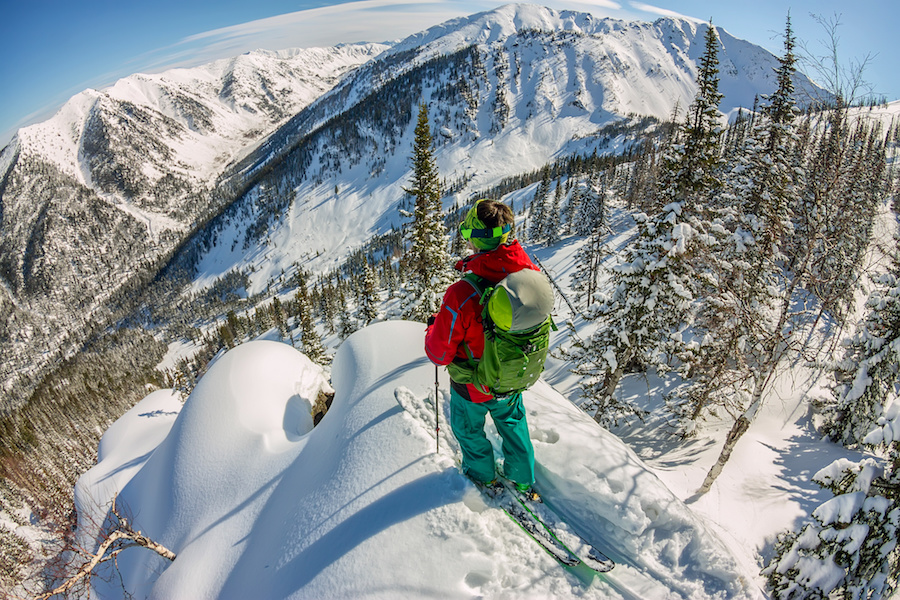 Always know before you go. Image: Mallard Mountain Lodge
Always know before you go. Image: Mallard Mountain Lodge
You have Shared great post here about safety training. I am glad to discover this post as I found lots of valuable data in your article. Thanks for sharing an article like this. Its is the beneficial article for mountaineers.Propane Safety Course
ReplyDelete